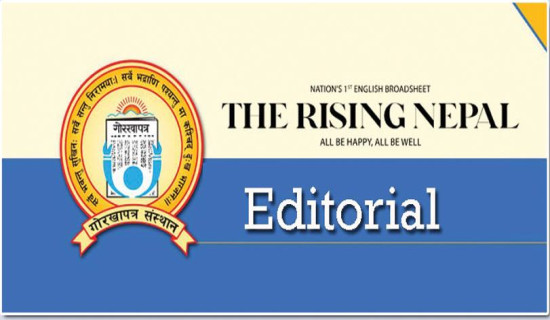- Thursday, 31 July 2025
Feasting For Followers
It’s hard to recall when meals weren’t first paused for a photo, be it a plate of momos, a thakali set, or a latte from a trendy café. Snapping and sharing food on Instagram had become second nature even before COVID, especially among youths. Over the past five years, platforms like Instagram have fueled a growing obsession with capturing picture-perfect dining experiences. From standing on chairs to rearranging plates until the food gets cold, this “camera eats first” trend often overshadows the meal.
Food photos now reflect not just what we eat but who we are—our style, status, and social awareness. However, this focus on aesthetics often disrupts conversation and weakens the traditional warmth of shared meals. Still, food photography allows people to connect with distant friends and family and has become a powerful tool for food businesses in Nepal to attract millennials. With food bloggers and hashtags like #food and #foodporn gaining massive traction, sharing meals online is more than a habit; it’s a social trend. For Nepali brands, it opens new opportunities to engage a generation that values experience, identity, and self-expression through food.
Instagram, founded in 2010, quickly became a go-to platform for sharing everyday moments—especially visually appealing ones like food. While Facebook and Twitter focus on updates and text, Instagram is built for the mobile, image-driven generation. In Nepal, Instagram has also reshaped how we experience meals, especially among the urban youth.
As in many parts of the world, what you eat and where can now indicate class and cultural exposure. A simple post tagged at a trendy café or featuring a beautifully plated international dish often signals more than just taste—it signals access, status, and sometimes aspiration. Meals, once moments of gathering and conversation in Nepali households, are now often paused for the perfect shot. This can interrupt the natural flow of meals, affecting conversation and the warmth traditionally associated with shared dining. Yet, the “camera eats first” culture has benefits too. It gives food greater recognition and serves as free restaurant marketing when dishes are tagged and geolocated.
Millennials photograph food for reasons ranging from documenting experiences to sharing with others, promoting restaurants, or simply for relaxation and fun. In Nepal, too, many young people enjoy food photography as part of a broader digital lifestyle. Others use it to stay connected with friends or explore food photography as a creative outlet. Interestingly, recent research also shows that taking photos before eating can enhance the pleasure of the meal, especially when the food is indulgent or visually appealing. So, while it may disrupt the traditional mealtime ambiance, it also boosts personal enjoyment and restaurant visibility.
Nepal’s evolving food culture raises essential questions: Are we losing the essence of shared meals, or are we simply adapting to a new way of connecting, expressing, and experiencing food in the digital age?
(MBA, School of Management, Tribhuvan University)














